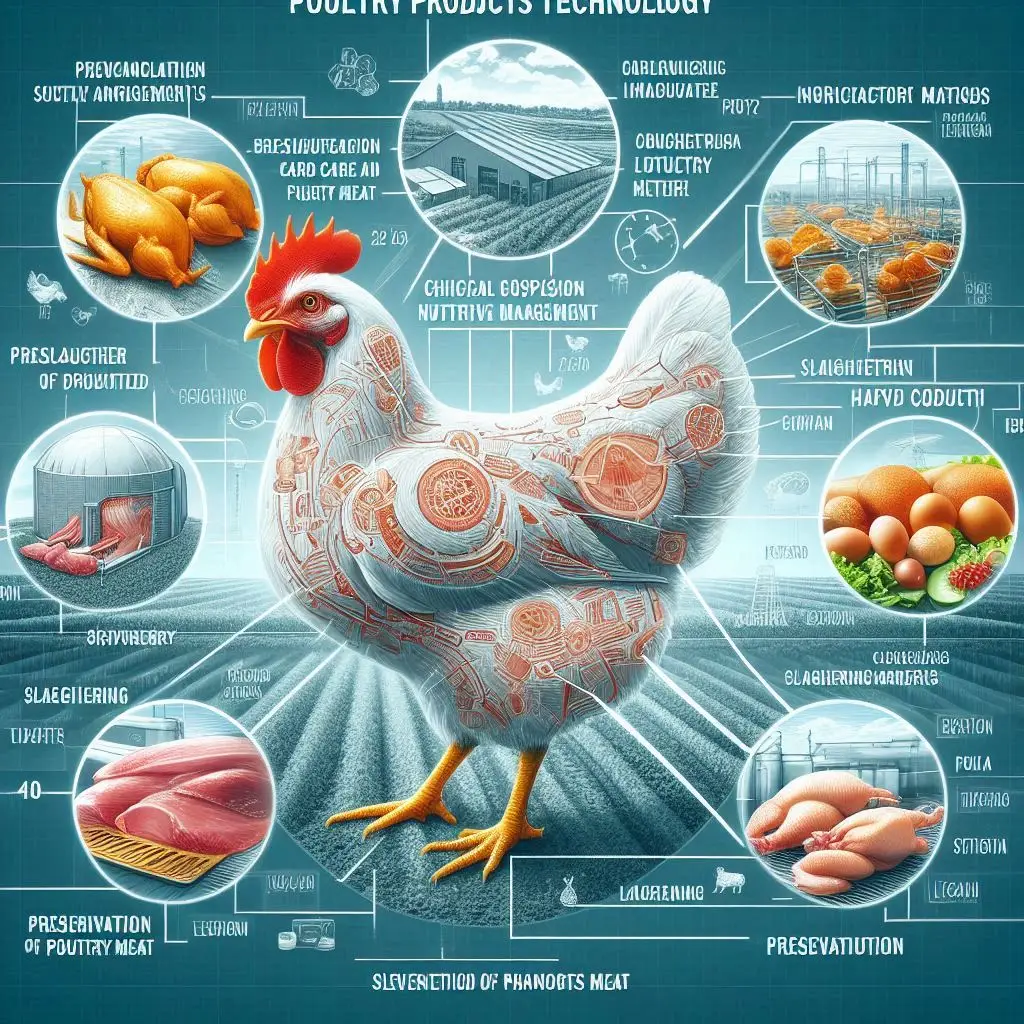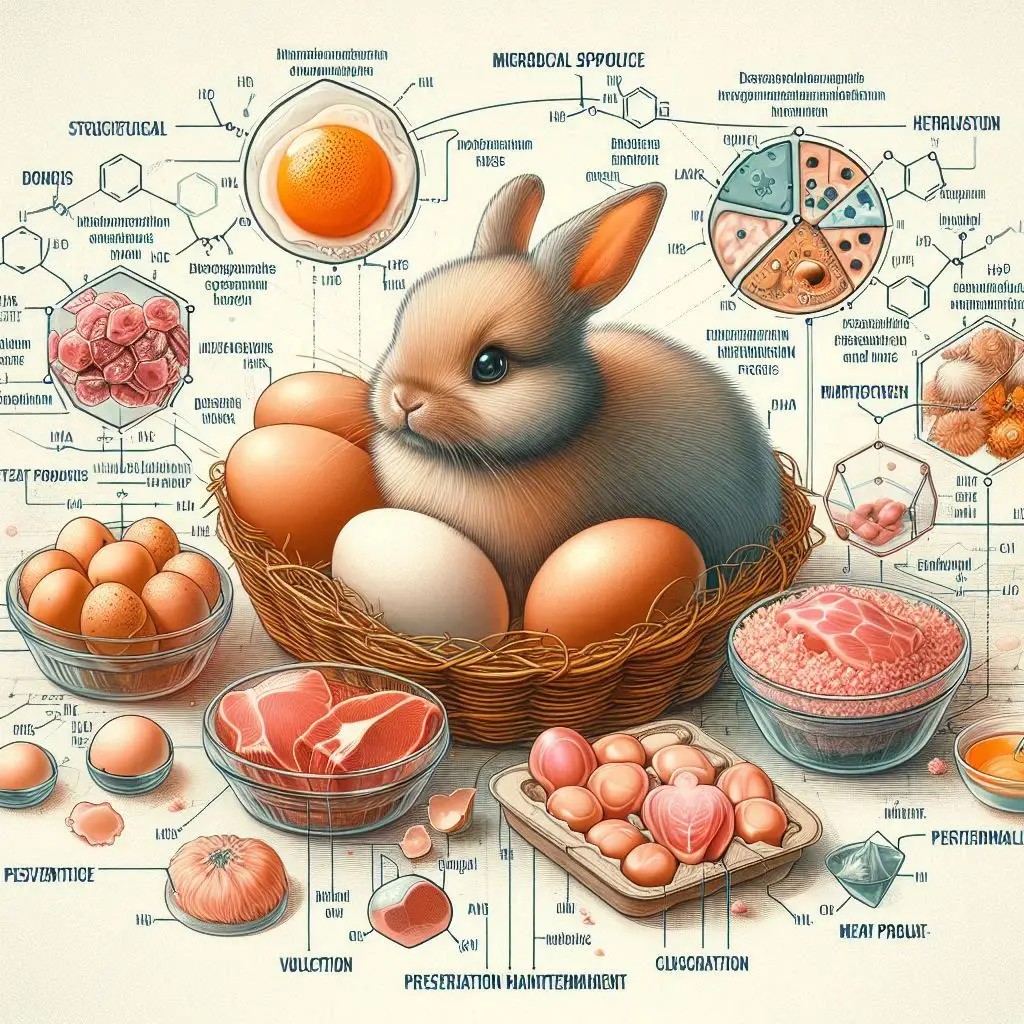Methods of Meat Preservation: Curing, Canning, and Irradiation

Meat preservation is crucial for maintaining food safety and extending the shelf life of meat products. In this article, we will explore three primary methods: curing, canning, and irradiation. Each method has unique benefits and processes. By understanding these techniques, you can make informed choices about preserving meat effectively.
What is Meat Preservation?
Meat preservation involves techniques that prevent spoilage and maintain the quality of meat. Spoilage occurs due to microbial growth, oxidation, and enzymatic reactions. Effective preservation methods inhibit these processes, ensuring meat remains safe and flavorful for a longer time.
Importance of Meat Preservation
Preserving meat is essential for several reasons:
- Food Safety: Proper preservation reduces the risk of foodborne illnesses.
- Extended Shelf Life: Techniques like canning and curing allow meat to be stored for months or even years.
- Flavor Enhancement: Some methods, like curing, enhance the flavor of meat products.
- Convenience: Preserved meat can be easily stored and used when needed.
Now, let’s dive into the specific methods of meat preservation.
Curing: A Time-Honored Technique
What is Curing?
Curing is one of the oldest methods of preserving meat. It involves adding salt, sugar, and other ingredients to inhibit microbial growth and enhance flavor. This process can be done through dry curing, wet curing, or brining.
How Curing Works
Curing works primarily through the following mechanisms:
- Salt: Salt draws moisture out of the meat. This process reduces water activity, making it difficult for bacteria to thrive.
- Nitrites: Sodium nitrite is often added to cured meats. It prevents the growth of harmful bacteria like Clostridium botulinum and gives cured meats their characteristic color.
- Sugar: Sugars like dextrose and sucrose help balance the saltiness and enhance flavor.
Types of Curing
- Dry Curing: In this method, a mixture of salt and spices is rubbed directly onto the meat. The meat is then left to cure in a cool, dry place. Prosciutto and salami are examples of dry-cured meats.
- Wet Curing: This method involves soaking the meat in a brine solution, which contains salt, sugar, and nitrites. Wet curing is common for hams and bacon.
- Smoking: Smoking is often combined with curing. The smoke adds flavor and further reduces moisture.
Benefits of Curing
- Flavor Enhancement: Cured meats have a distinct taste that many people enjoy.
- Long Shelf Life: Cured meats can last for months without refrigeration if stored properly.
- Versatility: Cured meats can be used in various dishes, from sandwiches to charcuterie boards.
Considerations for Curing
While curing is effective, it’s essential to follow safe practices. Always use the correct ratios of salt and nitrites. Over-curing can lead to an overly salty product, while under-curing can pose health risks.
Canning: A Modern Preservation Method
What is Canning?
Canning is a method that involves sealing meat in airtight containers and heating it to destroy spoilage microorganisms. This process is widely used for various foods, including vegetables, fruits, and meats.
How Canning Works
Canning works through the following steps:
- Preparation: The meat is cut into appropriate sizes and may be precooked. This step helps reduce the canning time.
- Sealing: The meat is packed into cans, leaving some headspace for expansion. The cans are then sealed tightly.
- Thermal Processing: Cans are heated to a specific temperature and pressure to kill bacteria, yeasts, and molds. This process ensures the meat is safe for consumption.
- Cooling: After processing, cans are cooled quickly to create a vacuum seal.
Benefits of Canning
- Long Shelf Life: Canned meats can last for years when stored properly.
- Convenience: Canned meat is ready to eat and requires minimal preparation.
- Nutritional Retention: Canning preserves the nutritional value of meat, making it a healthy option.
Types of Canned Meat
- Canned Beef: Often used in stews or as a topping for salads.
- Canned Chicken: A versatile option for sandwiches and casseroles.
- Canned Fish: Tuna and salmon are popular choices, providing healthy omega-3 fatty acids.
Considerations for Canning
Canning requires careful attention to detail. Always use tested recipes and follow guidelines from reputable sources like the USDA. Improper canning can lead to spoilage or foodborne illnesses.
Irradiation: A Cutting-Edge Technique
What is Irradiation?
Irradiation is a modern preservation method that uses ionizing radiation to kill bacteria, parasites, and other pathogens in meat. This technique is gaining popularity due to its effectiveness and safety.
How Irradiation Works
Irradiation works by exposing meat to controlled doses of radiation. The radiation disrupts the DNA of microorganisms, preventing them from reproducing. This method does not make the meat radioactive; it simply eliminates harmful organisms.
Benefits of Irradiation
- Extended Shelf Life: Irradiated meat can last significantly longer than non-irradiated meat.
- Food Safety: This method effectively reduces the risk of foodborne illnesses.
- Nutritional Preservation: Irradiation preserves the nutritional quality of meat, making it a healthy choice.
Applications of Irradiation
Irradiation is commonly used for:
- Poultry: Reducing the risk of Salmonella and Campylobacter.
- Beef: Extending shelf life and improving safety.
- Seafood: Preventing spoilage and extending freshness.
Considerations for Irradiation
While irradiation is safe, consumer acceptance varies. Some people have concerns about the process. Education about its safety and benefits is crucial for wider acceptance.
Other Meat Preservation Methods
In addition to curing, canning, and irradiation, several other methods exist for preserving meat. Here are a few:
Drying
Drying removes moisture from meat, inhibiting the growth of bacteria. Jerky is a popular dried meat product. This method is simple and effective, requiring minimal equipment.
Freezing
Freezing slows down spoilage reactions and microbial growth. It’s one of the most common methods for preserving meat at home. Proper packaging is essential to prevent freezer burn.
Smoking
Smoking not only adds flavor but also helps preserve meat. The process reduces moisture and creates a protective layer on the meat’s surface.
Choosing the Right Preservation Method
When choosing a meat preservation method, consider the following factors:
- Type of Meat: Different meats may require different methods for optimal preservation.
- Desired Shelf Life: Consider how long you want to store the meat.
- Flavor Preferences: Some methods enhance flavor more than others.
- Available Resources: Some methods require more equipment or space than others.
Conclusion
Understanding meat preservation methods is essential for anyone interested in food safety and quality. Curing, canning, and irradiation each offer unique benefits and processes. By choosing the right method, you can enjoy safe, flavourful meat products for an extended period.
For more pearls of Vets Wisdom:
https://wiseias.com/partitioning-of-food-energy-within-animals/






Responses